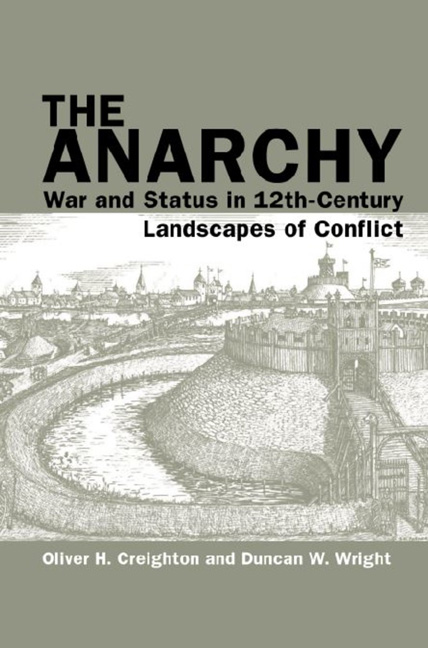Book contents
- Frontmatter
- Contents
- Acknowledgements
- List of Figures
- List of Colour Plates
- Chapter 1 Introduction
- Chapter 2 Historical Outline and the Geography of ‘Anarchy’
- Chapter 3 Waging War: Fields of Conflict and Siege Warfare
- Chapter 4 Architecture and Authority: Castles
- Chapter 5 Material Culture: From Arts to Coins
- Chapter 6 Performing Violence: Arms, Armour and Military Apparel
- Chapter 7 Faith and Fortification: The Church
- Chapter 8 Town, Village and Country
- Chapter 9 Anarchy on the Fen Edge: Case Study of the Isle of Ely
- Chapter 10 The Twelfth-Century Civil War in Context: Assessment and Reassessment
- Appendix Key Sites to Visit
- Bibliography
- Index
- Plate section
Chapter 6 - Performing Violence: Arms, Armour and Military Apparel
- Frontmatter
- Contents
- Acknowledgements
- List of Figures
- List of Colour Plates
- Chapter 1 Introduction
- Chapter 2 Historical Outline and the Geography of ‘Anarchy’
- Chapter 3 Waging War: Fields of Conflict and Siege Warfare
- Chapter 4 Architecture and Authority: Castles
- Chapter 5 Material Culture: From Arts to Coins
- Chapter 6 Performing Violence: Arms, Armour and Military Apparel
- Chapter 7 Faith and Fortification: The Church
- Chapter 8 Town, Village and Country
- Chapter 9 Anarchy on the Fen Edge: Case Study of the Isle of Ely
- Chapter 10 The Twelfth-Century Civil War in Context: Assessment and Reassessment
- Appendix Key Sites to Visit
- Bibliography
- Index
- Plate section
Summary
AS WELL AS equipping men to fight, the military material culture of the knightly classes expressed the corporate identity of their elite group. Blending functionality with ceremonial and symbolic value, distinctive forms of arms and armour proclaimed membership of the warrior classes and demonstrated an individual's access to the resources and networks necessary to purchase or have manufactured expensive and sometimes bespoke items. The mid-twelfth century is a period when the practice and image of knighthood were evolving in important ways bound up with an emerging culture of chivalry. On the battlefield, the mail shirt, helmet, shield and sword will have marked out the owner as a member of a martial elite who should be treated according to the rules of war, while quite different treatment could be expected for those outside chivalric society. This chapter identifies the key characteristics of arms and armour in the twelfth century and evaluates the evidence for change in the period, exploring how this can be linked to the construction and expression of knightly identity.
Combat and Combatants
Chroniclers marvelled at the aesthetic spectacle of large gatherings of armed men, and while they were doing so to make political points about the ability of their rulers and leaders to raise and lead armies, there is no mistaking the powerful visual impression that massed groups of soldiers left on contemporary minds. While armies were small by later medieval standards, so too was the contemporary population and it is instructive to remember that armies will have constituted exceptional gatherings of people for the period that could equate to the population of a medium-sized city.
Knights formed the backbone of twelfth-century armies, although this term is a catch-all for subtly different types of combatant. The author of the Gesta Stephani differentiates the elite belted knight from the more basic sort of serving knight, specified with the words ‘rustic’ or ‘common/ordinary’ (rustici and gregarii). These forces did not act alone but were combined with lower-ranking infantry – primarily archers and spearmen, whether of the fyrd, paid mercenaries, and occasionally armed peasants. While chroniclers tended to exaggerate the size of military forces, detailed studies of knight service reveal that even major magnates mobilised relatively modest numbers of elite warriors.
- Type
- Chapter
- Information
- The AnarchyWar and Status in 12th-Century Landscapes of Conflict, pp. 154 - 184Publisher: Liverpool University PressPrint publication year: 2017

